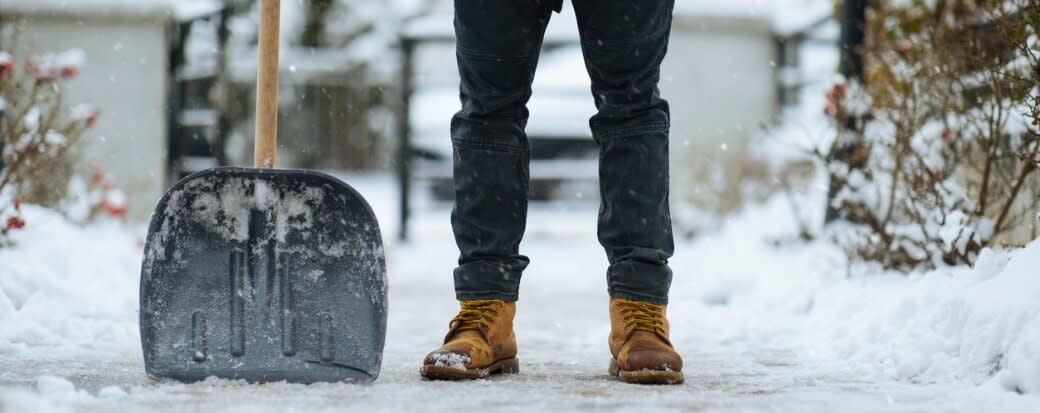A Driveway Heating System Cost Guide

Share this article:
Editor’s note: Lantern by SoFi seeks to provide content that is objective, independent, and accurate. Writers are separate from our business operation and do not receive direct compensation from advertisers or network providers. Read more about our Editorial Guidelines and How We Make Money.
How Much Does a Heated Driveway Cost?
12-by-24-foot driveway (one car): $3,400 to $8,000 24-by-24-foot driveway (two car): $6,900 to $16,000 36-by-24-foot driveway (three car): $10,000 to $24,000
What Factors Impact Costs
Heating system type: The heating system you choose will affect the bottom line. A heated driveway pad is typically the least expensive, costing about $1,600. Automation: You can opt for a manual or an automatic heated driveway. Manual is cheaper, but it requires you to activate the system. Automated controls operate at low levels and kick into high gear once the unit’s sensors detect snowfall or freezing precipitation. Driveway size: As mentioned above, the longer your driveway, the more your heated driveway will cost.
Average Cost of Heat Driveways Per Square Foot
Can You Install Into an Existing Driveway?
How Long Does It Take to Install a Heated Driveway?
What are Heated Mats?
Pros and Cons of External Heating Mats
No more shoveling: You’ll no longer have to shovel your driveway in the winter. Less expensive: You won't pay as much for a driveway heating mat as you would for installing headed tubes or coils under your driveway. That difference could amount to thousands of dollars. Saves on wear and tear of your driveway: The chemicals in rock salt may damage your driveway, kill your grass, and rust your vehicle. You won’t have to use them if you opt for a heating mat.
Not good for snowy areas: If you live in a region that gets a lot of snow and ice, heating mats may not be able to keep up with the weather, since they don't cover your entire driveway. Your driveway doesn’t get an upgrade: You'll keep your old driveway with a heated driveway mat. If you’re due for a new driveway, and you were considering average driveway paving, this might not be the best option for you. Installing a system that goes under the driveway may be a better choice.
Financing Options for Driveway Heating System
Home equity loan: With a home equity loan, you tap into your home's equity and borrow against it. Once you’re approved, you’ll get a lump sum from the lender that you repay over time with interest. However, if you fail to make your payments, the lender could foreclose on your home.
Home equity line of credit (HELOC): A home equity line of credit (HELOC) allows you to borrow against your home’s equity up to an approved limit. The interest rate is variable. Instead of receiving a lump sum, you can borrow HELOC funds as needed during the draw period. When the draw period ends, the repayment period begins, which can be as many as 30 years. However, keep in mind that if you can’t pay off what you owe, the lender could foreclose on your house. Credit card: You could put the heated driveway cost on your credit card. Credit cards are convenient and easy to use. However, they do have high interest rates, and if you can’t pay off the balance quickly, the interest could add up. You might be able to qualify for a credit card with a 0% introductory APR. In this case, you won’t be charged interest until the introductory period ends. If you can pay off the heated driveway before then, you won’t owe interest. But if you can’t, you will have to pay interest on the balance. Personal loan: You can use small personal loans to pay for driveway heating systems. Personal loans come in different amounts, so you can take out a bigger loan if you need it. With a personal loan, a bank, online lender, or credit union lends you a lump sum that you repay with interest in installments over time.
The Takeaway
Frequently Asked Questions
Photo credit: iStock/mihailomilovanovic
LCPL0323002
About the Author
Melissa Brock is a higher education and personal finance expert with more than a decade of experience writing online content. She spent 12 years in college admission prior to switching to full-time freelance writing and editing. Her work has appeared on Yahoo Finance, Entrepreneur, Investopedia, The Balance, FinanceBuzz, The Journal of College Admission, MarketBeat, College Finance, Rocket Mortgage, LeverageRx, Benzinga, Morty, Ally, and more.
Share this article: